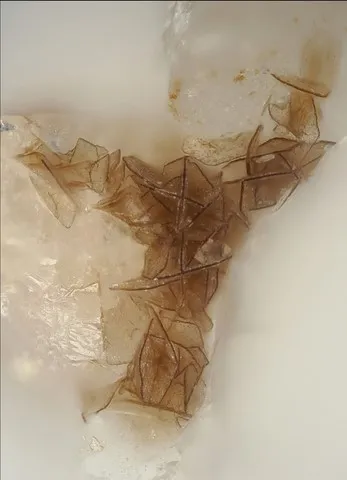CERITE
Class : Silicates
Subclass : Nesosilicates
Crystal system : Trigonal
Chemistry : Ce9(Mg,Fe)(SiO4)6(SiO3OH)(OH)3
Rarity : Uncommon
Cerite is a group of rare earth silicates of nepheline syenites and more generally of undersaturated alkaline rock massifs, in which it is frequently associated with other rare earth minerals such as bastnäsite or allanite, sometimes uraninite and epidote. It is called cerite-(CeCa) or ferricerite-(LaCa) depending on the dominant rare earth element. It gets its name because of the cerium it contains. It forms pseudo-octahedral crystals or hexagonal lamellae of 7 mm at most, and shapeless masses of a usually dark reddish-brown color.
Main photo : Cerite-(CeCa) from Poudrette quarry, Mont Saint-Hilaire, Canada © Stephan Wolfsried
Cerite in the World
Twinning and special crystallizations
No twin known for this mineral species.
Fakes and treatments
No fake identified for this mineral species.
Hardness : 5.5
Density : 4.75
Fracture : Irregular
Streak : White to yellow
TP : Translucent to opaque
RI : 1.806 to 1.820
Birefringence : 0.004
Optical character : Uniaxial +
Pleochroism : Visible
Fluorescence : None
Solubility : Acids
Magnetism : None
Radioactivity : None

